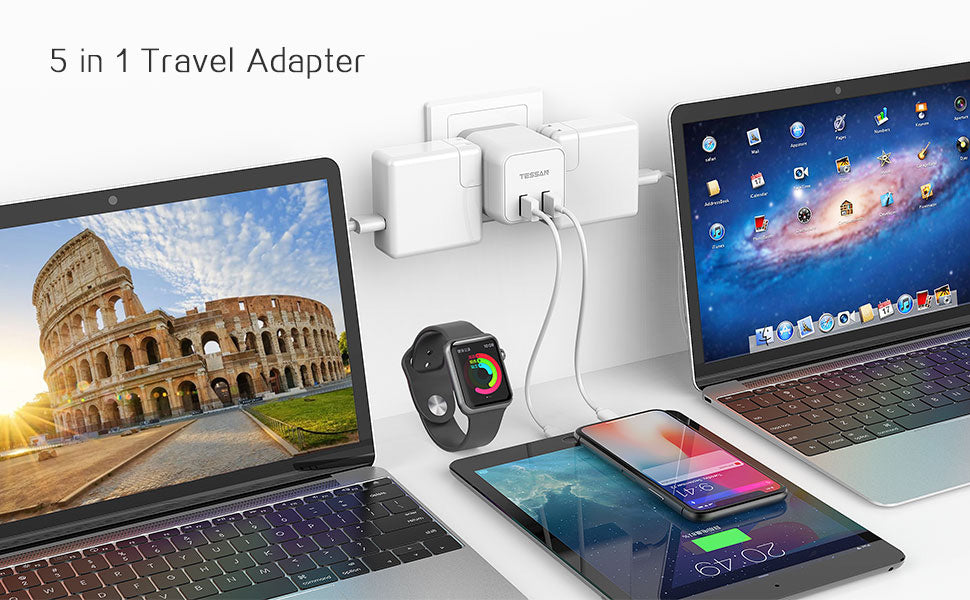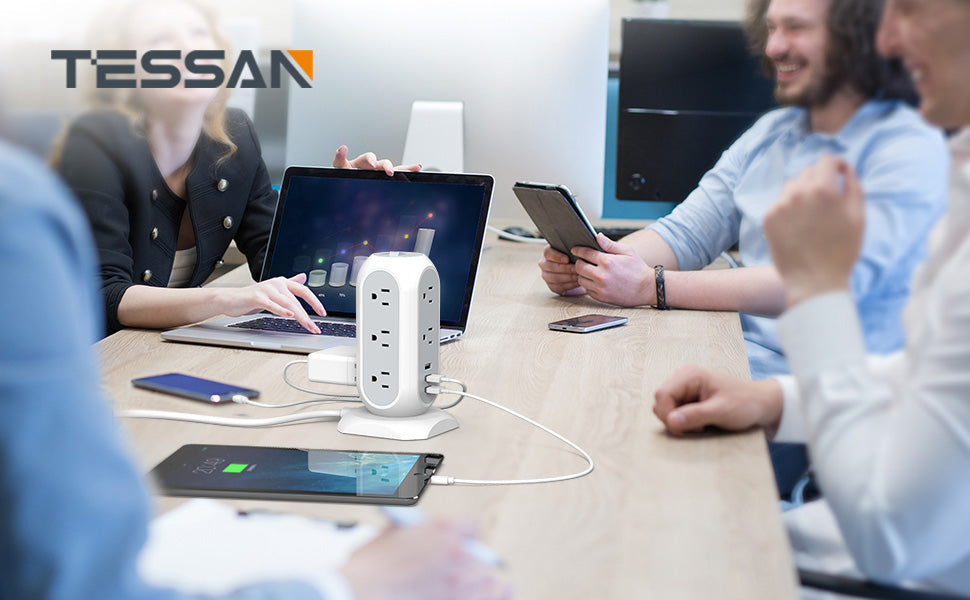We all know that feeling when we plug something in only to hear a loud pop and see a tiny bit of smoke. We’ve all been there, and it’s not a fun experience. But what exactly does a surge protector power strip do, and do you need one for your home? In this blog post, we’ll explore what surge protector power strips are and whether or not you need one for your home. We’ll also give you a few tips on how to choose the right one for your needs. So if you’re wondering whether or not you need a surge protector TESSAN smart power strip, read on!
What is a surge protector power strip?

As the name itself suggests, the surge protector power strips protect your electronics from power surges. Power spikes can damage your electronics and cause them to malfunction. The surge protector power strips will help to protect your electronics by absorbing the excess energy from the power surge and dissipating it safely.
Do you need the surge protector power strips for your home?
The surge protector power strips are a device that helps protect your electronic devices from power surges. Power surges can occur for a variety of reasons, including lightning strikes, power outages, and faulty wiring. The surge protector power strip diverts the excess electricity away from your devices to prevent damage.
There are a few things to consider when deciding whether or not you need surge protector power strips for your home. The first is the number of devices you have that need to be plugged in. If you have a lot of devices, or if you have particularly sensitive electronics, then the surge protector power strip with USB is a good idea.
Another factor to consider is the location of your home. If you live in an area that is prone to power surges, then the TESSAN surge protector power strip is a good investment. Finally, consider the cost of replacement if your electronics are damaged by a power surge. In some cases, the cost of replacing damaged electronics can be much higher than the cost of a surge protector power strip.
What are the benefits of using surge protectors?
There are several benefits of using the TESSAN surge protector power strip, which include:
- Protecting your electronics from power surges: Power surges can occur due to many reasons such as lightning strikes, faulty wiring, downed power lines, etc. When a power surge occurs, it can damage or destroy your electronics. The surge protector power strips will protect your electronics from damage by absorbing the excess energy from the power surge.
- Preventing fires: Power surges can also cause fires. By using surge protectors power strips, you can help prevent fires by keeping your electronics safe from damage.
- Saving money: Replacing damaged electronics can be expensive. By using surge protector power strips, you can save money by preventing damage to your electronics in the first place.
- Convenience: Surge protector power strips provide convenience by allowing you to plug multiple devices into one strip. This saves you from having to use multiple outlets and reduces clutter.
- Safety: Surge protector outdoor power strip can also help keep you safe by preventing electrical shocks.
- Peace of mind: Using surge protector power strips can give you peace of mind knowing that your electronics are protected from damage.
How to choose the right surge protector for your home
When choosing TESSAN surge protectors for your home, consider the following:
- The number of outlets you need.
- Do you need USB power strip ports?
- What is the maximum power rating (in watts) that you need?
- What is the maximum surge protection (in joules) that you need?
- Do you need Ethernet protection?
- Is portability important to you?
- What is your budget?
Once you have considered these factors, narrow down your choices and read reviews to find the best surge protector for your needs.
Surge protector power strip safety tips
Although surge protector power strips are generally safe to use, there are a few safety tips you should keep in mind. First, always make sure that the strip is properly plugged into an outlet. If it’s not, it could overheat and start a fire. Second, don’t overload the strip by plugging in too many devices. This could also cause overheating. Third, if you’re using the strip outdoors, make sure it’s weatherproofed. Finally, always unplug the strip before you clean it so you don’t accidentally shock yourself.
Surge protector FAQs

When it comes to surge protector power strips, there are a few things you should know. Here are answers to some frequently asked questions:
Q: What is the difference between a surge protector and a power strip?A: The surge protector starts working as soon as it detects an electrical spike. It diverts excess voltage away from your devices and prevents damage to them. A power strip can also protect your devices from overloading, but only if its circuit breaker trips. This usually happens when the current draw exceeds 12 amps.
Q: Should I unplug my surge protector when not in use?A: Yes, you should unplug your surge protector when it’s not in use. Leaving it plugged into the wall outlet could allow current to flow through it and damage your devices. If your surge protector has an on/off switch, make sure you flip it off before unplugging it from the wall outlet. Many people leave their surge protector plugged in 24/7 so they don’t have to worry about losing any electrically powered devices during a storm or power outage. However, this is unnecessary and could cause problems down the road if there’s ever a short circuit inside the device.
Q: Can I put my modem, router, and computer on one surge protector?A: Yes, you can plug them all in a single surge protector. However, ensure the surge protector has the wattage capacity you need. If you’re not sure, go with a higher-rated model to be safe.
Q: Is it better to use surge protectors or battery backups?A: A battery backup will protect your devices from power surges and power outages. The surge protector will only protect your devices from power surges. If you live in an area with frequent power outages, you may want to use both a battery backup and surge protector.
Q: What is the difference between a surge protector and a power conditioner?A: A power conditioner is designed to improve the quality of the power coming into your devices. This can be helpful if you live in an area with spotty or inconsistent power. The surge protector will protect your devices from power surges.
Conclusion
The surge protector power strips are a handy tool to have in your home, especially if you live in an area prone to power surges. While they are not absolutely necessary, they can save you from having to replace expensive electronics that are damaged by sudden spikes in electrical voltage. If you do decide to get a surge protector power strip, be sure to check out Tessan and read the reviews and find one that fits your specific needs. Thanks for reading!


